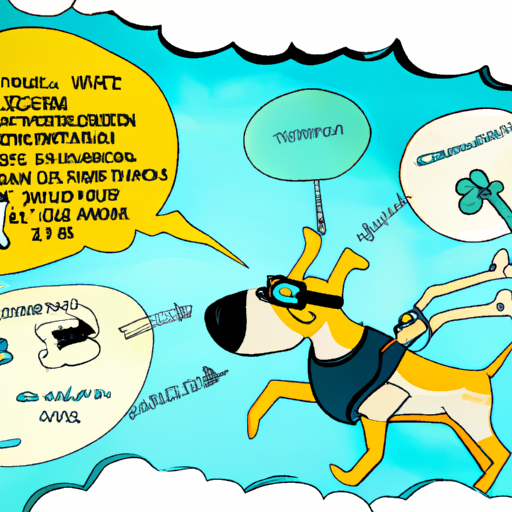Introduction
You might have observed it, the first time you let your furry friend near a body of water. They instinctively know what to do. Almost as if by magic, they’re paddling and splashing, their little tails wagging with excitement. But how do dogs know how to swim? Is it a natural instinct or something they learn? Let’s dive into the world of canine swimming.
The Science Behind It
Contrary to common belief, not all dogs are natural swimmers. However, those that are have a unique body structure and innate reflexes that enable them to swim. Breeds like the Labrador Retriever or the Portuguese Water Dog, for instance, have webbed feet and water-resistant coats that aid in swimming.
- Webbed Feet: Dogs with webbed feet have a skin membrane that connects their toes, enabling them to paddle water more effectively.
- Water-Resistant Coat: Some dogs have a double coat that provides buoyancy and insulation in cold water.
Here’s a simple table to show differences between swimming and non-swimming breeds:
| Swimming Breeds | Non-Swimming Breeds | |
|---|---|---|
| Coat | Water-Resistant | Regular |
| Feet | Webbed | Non-webbed |
The Instinctive Drowning Response
When dogs first encounter water, they exhibit something known as the Instinctive Drowning Response (IDR). This is visible through the “doggy paddle,” an instinctive swimming style where dogs paddle their front legs in a manner that resembles a child crawling.
- Doggy Paddle: Dogs keep their heads high above the water, paddling with their front legs while their hind legs provide propulsion.
Teaching Your Dog to Swim
While some dogs take to water naturally, others may need a gentle introduction. Here are a few steps you can follow:
- Start Slow: Introduce your dog to shallow water and gradually increase the depth.
- Use a Flotation Device: A doggy life jacket can provide extra support and confidence to your furry friend.
- Be Supportive: Get in the water with your dog and encourage them with positive reinforcement.
The Role of Breeds
While many dogs can learn to swim, some breeds find it more challenging due to their physical characteristics. For instance, Bulldogs and Dachshunds have short legs, making it difficult for them to paddle effectively.
- Bulldogs: Their heavy torsos and short legs make swimming a challenge.
- Dachshunds: They have a long body and short legs, which hampers their swimming ability.
Frequently Asked Questions
-
Are all dogs natural swimmers?
- No, not all dogs are natural swimmers. It often depends on their breed and individual traits.
-
Can I teach my dog to swim?
- Yes, most dogs can be taught to swim with patience, positive reinforcement, and safety measures.
-
Are there specific breeds that cannot swim?
- While all dogs can be taught to swim to some extent, breeds with short legs and heavy bodies like Bulldogs and Dachshunds may find it more challenging.
-
What is the instinctive drowning response?
- This is an inherent response that kicks in when a dog is in water. It’s often visible through the “doggy paddle.”



